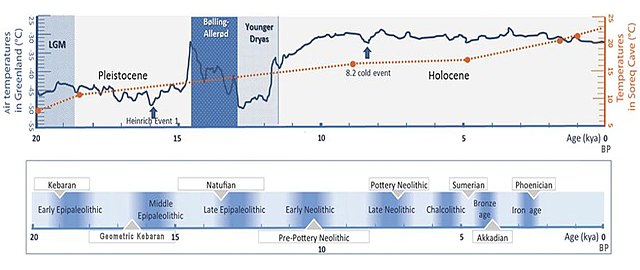
Kebaran culture
Archaeological culture in the Eastern Mediterranean - Palestine / From Wikipedia, the free encyclopedia
The Kebaran culture, also known as the 'Early Near East Epipalaeolithic', is an archaeological culture of the Eastern Mediterranean dating to c. 23,000 to 15,000 Before Present (BP). Its type site is Kebara Cave, south of Haifa. The Kebaran was produced by a highly mobile nomadic population, composed of hunters and gatherers in the Levant and Sinai areas who used microlithic tools.
Quick Facts Geographical range, Period ...
| Geographical range | Levant |
|---|---|
| Period | Upper Paleolithic |
| Dates | c. 23,000 – c. 15,000 BP |
| Type site | Kebara Cave |
| Preceded by | Ahmarian Levantine Aurignacian |
| Followed by | Natufian culture |
Close
